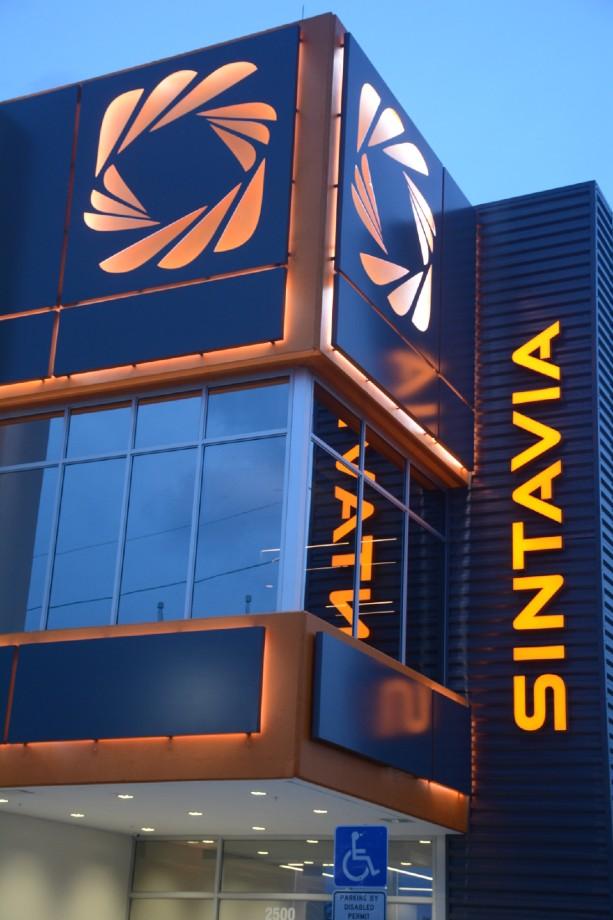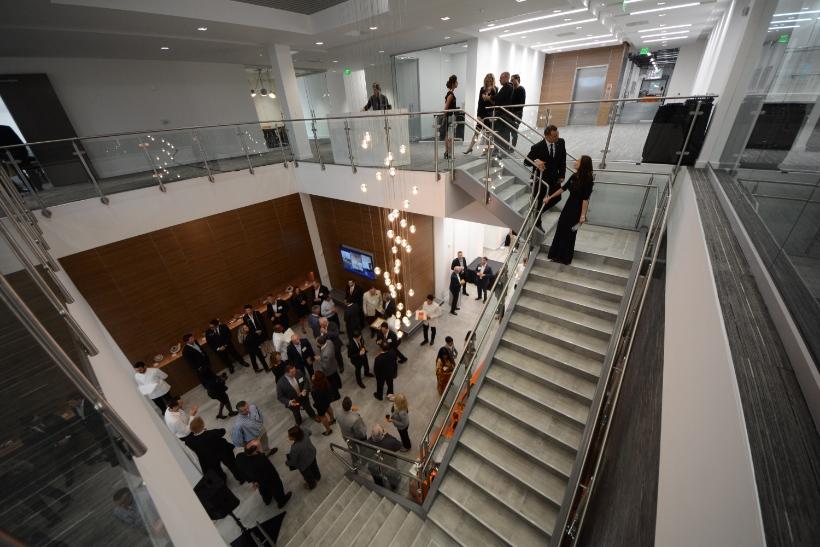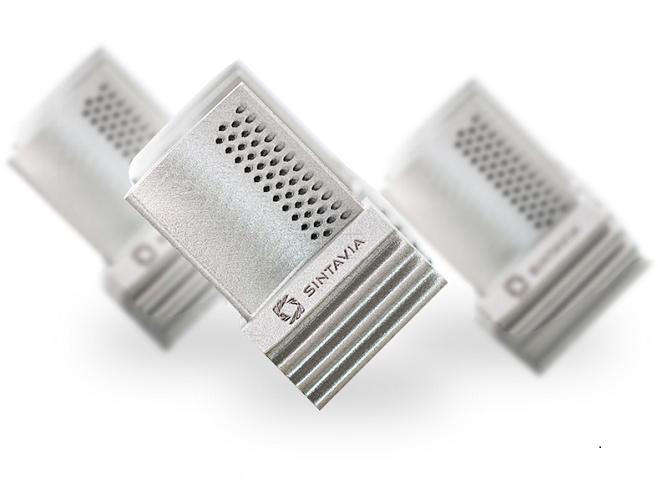Editor-in-Chief
- FMA
- The Fabricator
- FABTECH
- Canadian Metalworking
Our Publications
Categories
- Additive Manufacturing
- Aluminum Welding
- Arc Welding
- Assembly and Joining
- Automation and Robotics
- Bending and Forming
- Consumables
- Cutting and Weld Prep
- Electric Vehicles
- En Español
- Finishing
- Hydroforming
- Laser Cutting
- Laser Welding
- Machining
- Manufacturing Software
- Materials Handling
- Metals/Materials
- Oxyfuel Cutting
- Plasma Cutting
- Power Tools
- Punching and Other Holemaking
- Roll Forming
- Safety
- Sawing
- Shearing
- Shop Management
- Testing and Measuring
- Tube and Pipe Fabrication
- Tube and Pipe Production
- Waterjet Cutting
Industry Directory
Webcasts
Podcasts
FAB 40
Advertise
Subscribe
Account Login
Search
Metal 3D printing company Sintavia opens a new plant—and makes bold plans for capturing new business
The bold design of Sintavia’s new metal 3D printing plant complements the company’s plan to take aerospace business from conventional manufacturers
- By Don Nelson
- June 24, 2019
- Article
- Additive Manufacturing
May was a good-news month for Sintavia LLC, a vertically integrated producer of additively manufactured metal parts for the aerospace and defense industry. The company announced that it had entered into a joint venture with Howco Group, and it held the grand opening of its new facility.
Sintavia welcomed 150 guests to the May 9 opening of its additive manufacturing (AM) plant in Hollywood, Fla. Among the attendees were local officials, representatives from nine of the 10 largest OEMs in the aerospace and defense industry, and the president and CEO of Sumitomo Corporation of Americas.
Sintavia’s founder, chairman, and CEO, Brian Neff, referred to the 55,000-square-foot plant as the first purpose-built, independent AM factory in the world dedicated to Tier 1 aerospace production. (The company’s name is a combination of the words “sinter” and “aviation.”)
The facility reportedly houses more than $25 million worth of equipment, including medium- and large-scale metal 3D printers, postprocessing machinery, EDMs, and wet booths. The striking building is bright, clean, and airy, and its open layout permits observation of the entire manufacturing process from the upper floor.
Bold Plans
The boldness of the factory’s design was matched by Neff’s comments about AM and Sintavia’s goals during his speech at the open house and in a subsequent interview with The Additive Report.
After thanking colleagues and other people who contributed to making the new facility a reality, Neff turned his attention to AM’s place in manufacturing.
“The concept of additive manufacturing has many clear benefits over traditional manufacturing—particularly in metal and particularly when compared with the manifold drawbacks of 5,000-year-old technologies such as metal casting and forging,” he said. “Additive manufacturing is less expensive, faster, better designed, produces almost no waste, and is incredibly less pollutive and toxic than traditional casting and forging methods.”
Neff contends the market will come to recognize and fully appreciate these advantages, which will lead to AM eventually displacing casting and forging in aerospace. The superiority of AM, he said, will consign these “dirty types of manufacturing and these polluters to the dustbin of history.”
He also predicted that once the new facility is fully operational, in three to five years, the company will:
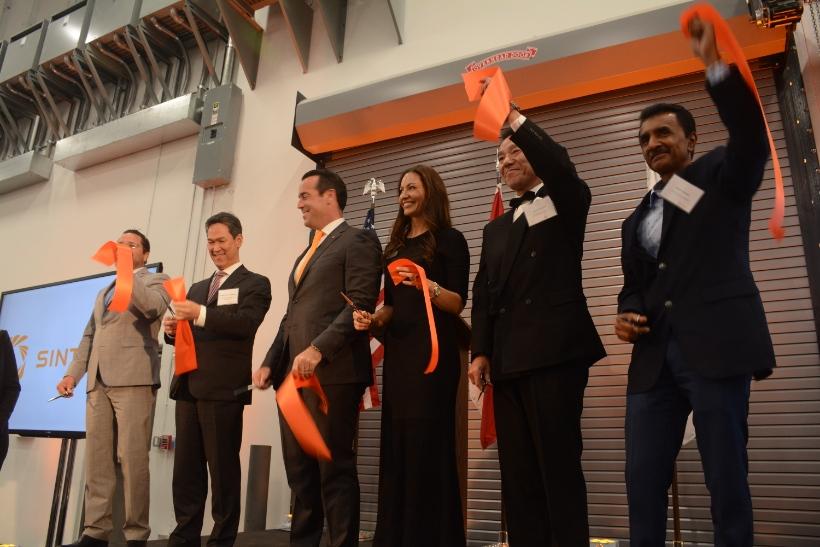
The ribbon-cutters at the Sintavia grand opening were (from left): Josh Levy, mayor of Hollywood, Fla.; Masaki Nakajima, CEO and president of Sumitomo Corporation of Americas; Brian Neff, Sintavia founder, CEO, and co-owner; Jana Neff, Sintavia co-owner; Toyoyuki Sato, corporate officer of Taiyo Nippon Sanso Corp.; and Dr. Wazir Ishmael, city manager of Hollywood.
• Employ 130 people earning an average annual salary of $80,000.
• Produce in excess of $100 million in revenue annually, based on thousands of part numbers representing tens of thousands of individual parts.
• 3D-print components that will be less expensive than and outperform traditionally cast ones, and that will be produced more quickly with less waste.
• Duplicate the success of the Florida facility in other locations, including Houston, Phoenix, Seattle, Indianapolis, Japan, and Europe.
Talking With Sintavia’s CEO
Several days after the Sintavia grand opening, The Additive Report conducted a telephone interview with company CEO Brian Neff. Below is an edited excerpt of that conversation.
Additive Report: Most people in industry consider AM a complementary technology to conventional manufacturing methods. You think AM will supplant traditional manufacturing methods in some industries. Which ones?
Neff: I think that within specific markets, AM will displace some traditional manufacturing methods, with aerospace being a primary one. The scale in aerospace is right for additive. You’re making hundreds of parts for a specific part number as opposed to, say, 10,000 parts for the automotive industry.
Another thing is that the traditional casting supply chain is, let’s say, strained between the OEMs and the casting houses. So I see a strategic opportunity—and not just a technological opportunity—to build parts for aerospace.
Aerospace is the tip of the spear. The oil and gas industry would also be a very good industry for additive, though a totally different usage.
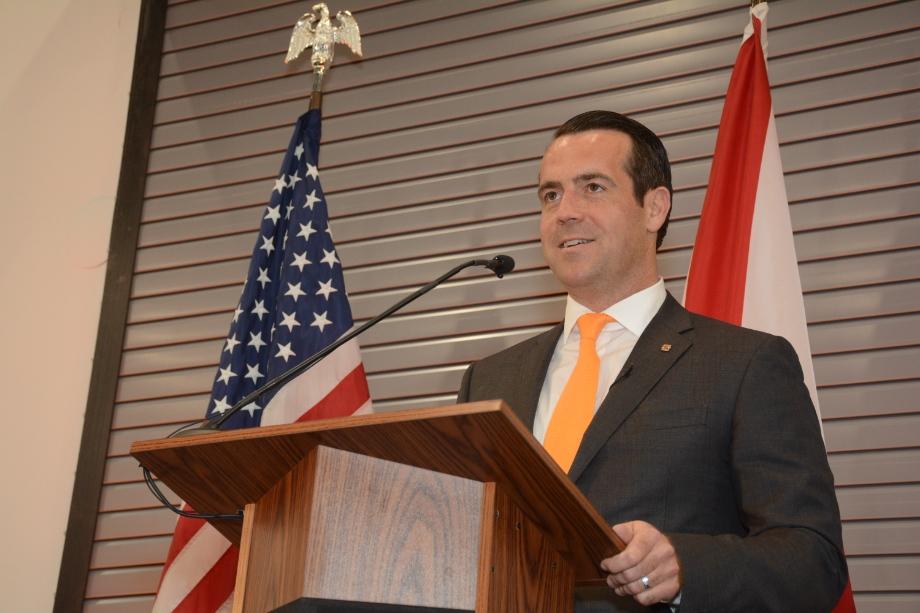
Sintavia CEO Brian Neff spoke enthusiastically about the benefits of AM for producing aerospace parts at the company’s grand opening.
AR: Though the company is interested in serving other sectors, your major focus is aerospace. Is it a risk putting so much emphasis on one industry?
Neff: It is a real risk. (Integration of AM into aerospace) could be five to 10 years off instead of being months or a year off. But my background is aerospace. [He has been in the industry since 2003.] I understand the players, and I have relationships. So it’s easier for me to be involved in aerospace than other industries.
And knowing what I know about the supply chain as it exists today and knowing what I know about the advantages of additive manufacturing, I think it’s going to happen very soon. In fact, it’s already happening.
AR: Can you give an example?
Neff: We have a part that we printed. We did all the substantiation builds, all the conformance builds, developed it, and it was accepted by one of our major OEM customers. That was the first time ever that has happened.
Typically, OEMs build the parts themselves, or they design the parameters and farm it out to the supply chain. The part we made was done completely outside of this customer and they accepted it. So that was a really big deal.
AR: How long did that process take?
Neff: Five months. That’s probably longer than it will take in the future. But this being the pathfinder, it’s OK that it was a little bit longer.
AR: Are the people in the aerospace industry ready to accept AM? Or are they reluctant?
Neff: You have two camps in most aerospace companies who are strongly pro-AM. You have scientists, who are early adopters, and R&D people. They know it’s a superior technology compared to casting, both metallurgically and in terms of design.
Then you have senior-level people who say, “Well, I’m not really that happy with my traditional supply chain. It’s working, but it’s causing me problems. I can't get my parts on time. The pricing is going up year over year and I can’t control it. I want to create a parallel supply chain.” This presents an opportunity.
The difficulty in these organizations is always going to be the chief engineers of the various programs. They are running the programs and are incentivized to meet delivery times, even if they’re a little late. Adopting a new technology is seen as a big risk for them.
So it’s our job to convince and demonstrate to these chief engineers and program managers that we have a superior technology and make a superior product.
AR: Assuming AM use continues to grow, will it be through companies like Sintavia that supply 3D-printed parts, or will OEMs acquire their own 3D printers?
Neff: I’m not smart enough to answer that in any sort of specific manner other than to say that a big company’s AM buy-versus-make strategy will most likely be the same as their traditional buy-versus-make strategy.
So, if you have a company that buys 80 percent of its parts for its traditional supply chain and makes 20 percent, I would argue that it’s probably going to have the same strategy for AM parts.
If anything, they will buy more AM parts than make AM parts because additive machines are very expensive—more than traditional manufacturing machines.
About the Author

Don Nelson
2135 Point Blvd.
Elgin, IL 60123
(815)-227-8248
About the Publication
- Podcasting
- Podcast:
- The Fabricator Podcast
- Published:
- 04/16/2024
- Running Time:
- 63:29
In this episode of The Fabricator Podcast, Caleb Chamberlain, co-founder and CEO of OSH Cut, discusses his company’s...
- Trending Articles
- Industry Events
16th Annual Safety Conference
- April 30 - May 1, 2024
- Elgin,
Pipe and Tube Conference
- May 21 - 22, 2024
- Omaha, NE
World-Class Roll Forming Workshop
- June 5 - 6, 2024
- Louisville, KY
Advanced Laser Application Workshop
- June 25 - 27, 2024
- Novi, MI
























